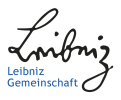Astrid Maute (University of Colorado Boulder, USA) Aspects of thermosphere-ionosphere coupling to the lower atmosphere and the magnetosphere: From my dustbin and beyond
Astrid Maute (University of Colorado Boulder, USA) wird auf unserem IAP-Kolloquium einen Vortrag zum Thema "Aspects of thermosphere-ionosphere coupling to the lower atmosphere and the magnetosphere: From my dustbin and beyond" halten.
Zusammenfassung:
The vertical coupling between the lower and upper atmosphere, driven by atmospheric solar tides and planetary waves, is highly variable and significantly impacts the dynamics, composition, and ionospheric electrodynamics of the thermosphere-ionosphere (TI) system. Additionally, complex solar wind forcing always affects the high-latitude TI region, with effects extending to the mid- and low-latitude regions. Especially during geomagnetic active times, knowing the spatio-temporal distribution of the electromagnetic energy and energetic particle precipitation is important. Progress has been made in specifying this forcing through observations, such as LEO satellites providing high-latitude field-aligned current data, although corresponding auroral particle precipitation information remains insufficient. Missions like ICON, TIMED provide a measure of the upward propagating tides propagating up from the lower atmosphere, but we are still not able to quantify the global tidal spectrum on subweekly time scales, limiting our ability to quantify the TI variability associated with the lower atmosphere. General circulation models, especially whole atmosphere models, aid in the understanding, but observations are needed to validate the findings.
In this presentation, I will highlight specific aspects of the coupled system, such as the role of planetary waves and the terdiurnal tide in generating IT variability. To enhance magnetosphere-ionosphere coupling and facilitate the use of field-aligned current observations, I will demonstrate the need for current model development. I will conclude by discussing the anticipated Electrojet Zeeman Imaging Explorer (EZIE) measurements and the necessity for additional measurements in the space-atmosphere interaction region.












